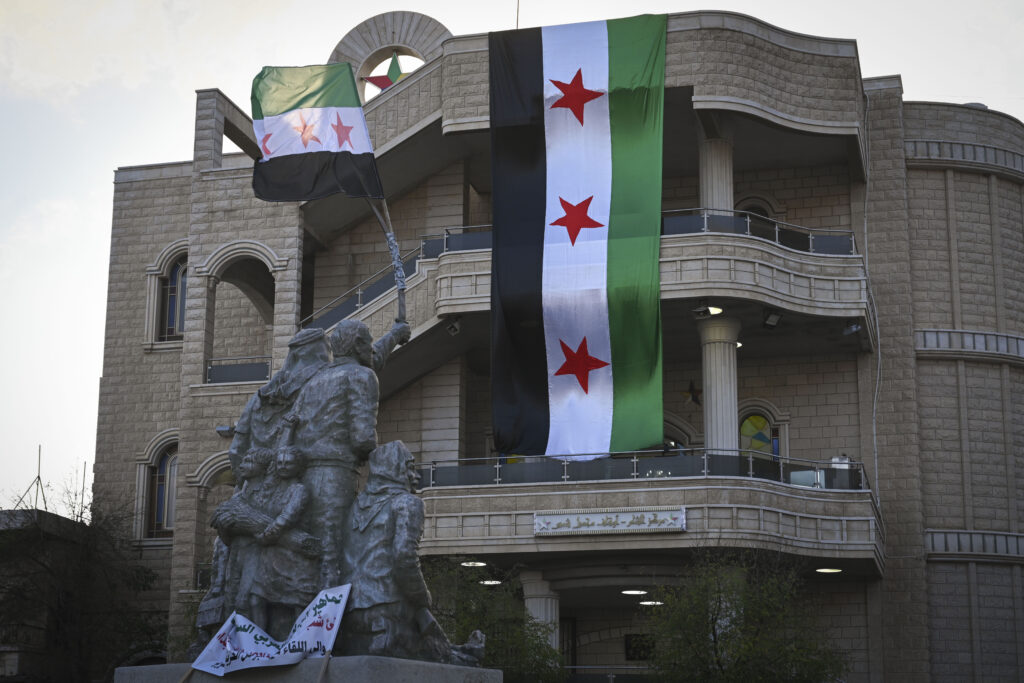
Israel’s Defense Efforts: Strikes in Syria, Losses in Lebanon, and Hamas Infiltration in UN Schools
Israeli Airstrikes Target Suspected Chemical Weapons Facilities in Syria
Israeli Foreign Minister Gideon Sa’ar revealed that the Israeli Air Force conducted airstrikes on facilities in Syria suspected of being used for the production of chemical weapons and long-range missiles. These strikes aim to prevent the weapons from falling into the hands of extremist groups, Sa’ar explained.
“We targeted strategic weapons systems, such as residual chemical weapons and long-range missiles, to ensure they don’t endanger Israeli security,” Sa’ar said in an interview. He emphasized that the safety of Israel and its citizens remains the country’s only priority. However, he declined to specify the timing or locations of the strikes.

Syria had committed to eliminating its chemical weapons stockpile in 2013 following a chemical attack in Ghouta that killed hundreds of civilians. Despite this, reports in 2023 suggested that remnants of these materials might fall into the hands of Iranian-backed Hezbollah, raising concerns about their use against Israeli forces or civilians.
The situation in Syria escalated further on Sunday when rebel forces overran Damascus, forcing President Bashar Assad to flee, ending decades of his family’s rule. Israel has since bolstered its military presence in strategic areas, including the buffer zone along the Syrian border, to protect the Golan Heights and other vulnerable regions. Defense Minister Israel Katz confirmed that the Israeli Defense Forces (IDF) are systematically targeting remaining strategic weapons in Syria to keep them out of terrorist control.
The IDF has successfully neutralized several weapon systems, including surface-to-air missiles, air defense networks, and long-range rockets, in its ongoing efforts to safeguard regional security.
Four IDF Soldiers Killed in Southern Lebanon Despite Ceasefire
Four Israel Defense Forces (IDF) soldiers were killed in Southern Lebanon on Monday, even though a ceasefire agreement remains in effect. The fallen soldiers were identified as Maj. (res.) Evgeny Zinershain, 43, Capt. (res.) Sagi Rubinshtein, 31, Master Sgt. (res.) Binyamin Destaw Negose, 28, and Sgt. Maj. (res.) Erez Ben Efraim, 25. All were members of the 226th Brigade’s Battalion 9263.
The ceasefire agreement, which began on November 27, stipulated that Israeli forces would withdraw from Lebanon by late January, with the Lebanese army taking control of the vacated areas. However, the IDF reported numerous ceasefire violations by Hezbollah, including attacks on Israeli positions. Since the truce began, Israeli forces have killed approximately two dozen Hezbollah fighters and conducted airstrikes on several Hezbollah facilities.
IDF operations in Southern Lebanon have uncovered significant caches of weapons concealed in civilian areas, including anti-tank rockets, mortars, and vehicles equipped with rocket launchers. Troops also destroyed tunnel networks used by Hezbollah for terrorist activities.
Meanwhile, the death toll from the ongoing conflict remains heavy. As of now, 813 Israeli soldiers have died since October 7, 2023, including 381 during the Gaza ground campaign. Additionally, the IDF mourns the loss of Captain Avraham Ben Pinchas, a platoon commander killed during a mission in Gaza, as well as other personnel who have fallen in defense operations.
NY Times Uncovers Hamas Links in UN-Run Schools
The New York Times confirmed that members of Hamas and Palestinian Islamic Jihad (PIJ) were employed by the United Nations Relief and Works Agency (UNRWA), which operates schools and provides social services in Gaza. The report, based on Israeli-provided documents and interviews with Gaza residents, found that at least 24 UNRWA school employees were affiliated with Hamas or PIJ, including school principals, counselors, and teachers.
Most of these individuals also served in Hamas’s Qassam Brigades, and some were seen publicly carrying weapons. The report highlighted Ahmad al-Khatib, a deputy principal at an UNRWA elementary school, who was also a Hamas squad leader. Documents revealed that Hamas used schools and other civilian facilities as strategic obstacles in its fight against Israel.
Hamas’s influence extended beyond Gaza. In Lebanon, UNRWA’s Deir Yassin Secondary School principal Fateh Sherif Abu el-Amin was identified as a senior Hamas figure. He was killed in an airstrike in September 2024, further exposing the group’s presence within UN institutions.
Israel has long accused UNRWA of enabling terrorism. In July, it released a partial list of 108 UNRWA employees allegedly linked to Hamas. The Israeli government has since banned the agency, describing it as deeply compromised by terrorist affiliations. The Foreign Ministry asserted, “UNRWA in Gaza is not just compromised; it is entirely infiltrated by terrorist operatives.”
The post Israel’s Defense Efforts: Strikes in Syria, Losses in Lebanon, and Hamas Infiltration in UN Schools appeared first on Israel365 News.
Israel in the News
 (@eytanhalon)
(@eytanhalon)